Everything about Portable Fire Extinguishers - NFPA Fire Extinguisher
- Field Service Management
- 9 Min Read,
Portable fire extinguishers are an essential tool for fire safety that should never be taken for granted. They are often the first line of an effective solution to any fire problem in an environment and help prevent many small fire issues from becoming uncontrollable.
This guide about portable fire extinguishers aims to provide every piece of information that you need to know about fire extinguishers, how to maintain them correctly, how frequently you need to test them, and why they’re so essential to place in schools, homes, commercial places, public paces and more..
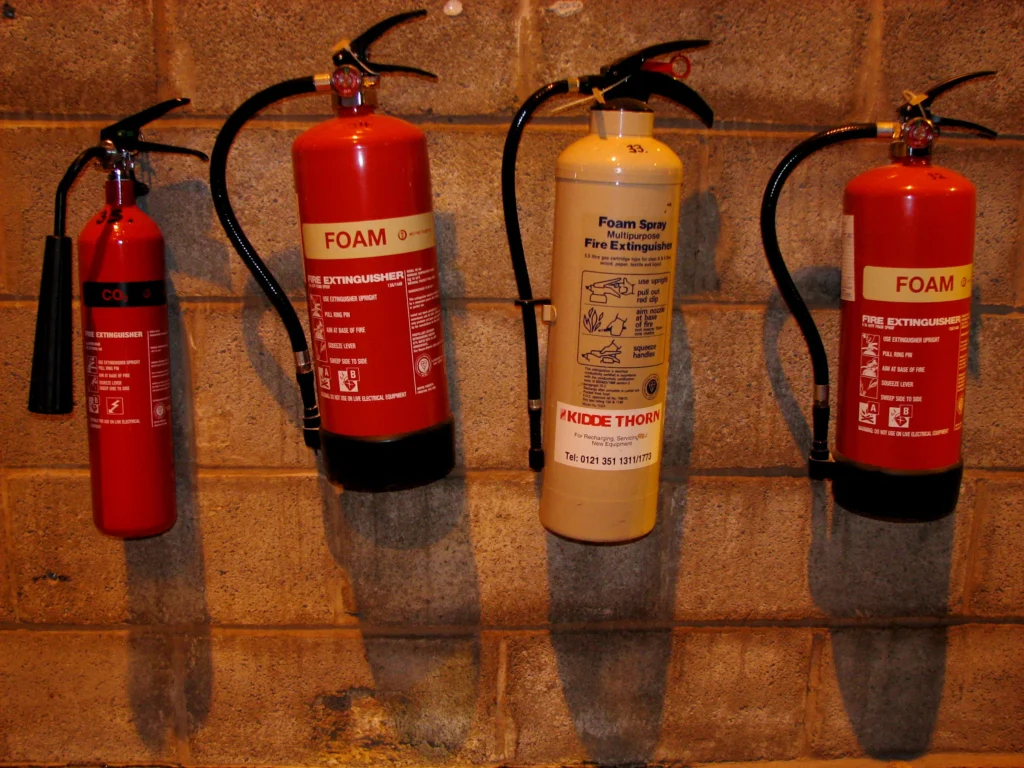
Here What We Cover
Types of Portable Fire Extinguishers
Fire extinguishers come in many different types, and their division is also based on the types of harmful fires that exist. Before discussing each type of fire extinguisher, let’s review all the classes of fires as classified by the NFPA.
The different types of harmful fires are based on the types of materials that are involved in the fire,
Class A Fires
Fires in ordinary combustible materials, such as wood, cloth, paper, rubber, and many plastics.
Class B Fires
These fires are involved with liquids that are combustible, flammable, fire-prone gases, chemical solvents, alcoholic mixtures, oil products, and any remnants of petroleum.
Class C Fires
Fires that involve energized electrical equipment.
Class D Fires
Fires in combustible metals, such as magnesium, titanium, zirconium, sodium, lithium, and potassium.
Class K Fires
These fires are classified as those that occur in cooking environments or during the use of cooking appliances. They involve using cooking materials that are fire-prone and combustible, such as animal fats and vegetable oils.
Here are the types of fire extinguishers for different situations,

Use our free estimate template now
Make winning quotes in minutes—for any industry and any job.
Water-Type Fire Extinguisher
Water-type extinguishers are intended for use on Class A fires. Most extinguishers are water-based agents, but a full water extinguisher has disadvantages. It cannot be used in freezing conditions, as the water inside would freeze and make the fire extinguisher useless.
Some water-type fire extinguishers contain anti-freezing agents, allowing them to be used in even relatively cold environments.
Film-Forming Foam Type Fire Extinguisher
This type of extinguisher is used on both Class A and Class B fires. There are two types, FFFP (film-forming fluoro protein) and AFFF (aqueous film-forming foam) extinguishers.
An advantage presented by this type of extinguisher is that if used on Class B fires, specifically ones involving flammable liquids, then the foam forms a layer on the water surface and prevents the reignition of any fire permanently.
Carbon Dioxide Type Fire Extinguisher
CO2 fire extinguishers are used on Class B and Class C fires. The main advantage of this type of fire extinguisher is that it leaves no residue after application or use. This provides a perfect scenario for environments that have valuable commodities by leaving no trace of extinguisher on them.
Although they leave no residue, CO2 fire extinguishers are not advised to be used in windy environments because of the nature in which the agent can quickly dissipate.
Get posts like this in your inbox.
Keep learning how to run a 5-star business with our bi-weekly newsletter.
Halogenated Agent Type Fire Extinguisher
These fire extinguishers are used on Class A, Class B, and Class C fires. There are two types, Halon and Clean Agent extinguishers. Halon extinguishers are similar to CO2 extinguishers and leave no residue after application but the material used to make the agent was harmful to the ozone layer and hence has been stopped.
Now, Clean Agent extinguishers provide alternatives to Halon-based extinguishers and are safe for use for the health of the environment.
Dry Chemical Type Fire Extinguisher
These extinguishers are used in Class A and Class B fires. There are two types: Ordinary and Multipurpose dry chemical extinguishers. Ordinary dry chemical extinguisher agents are made up of small particulate materials like sodium and potassium bicarbonate. They provide the advantages of resistance to packing and moisture absorption.
Multipurpose dry chemical extinguishers have a base of ammonium phosphate, which provides the advantage for Class A fires of sticking to hot surfaces. This helps isolate the fuel from the air, preventing the fire from spreading.
Wet Chemical Type Fire Extinguisher
These extinguishers are used on both Class A and Class K fires. The extinguishing agent comprises of solutions of water and chemicals that are conductors of electricity.
On Class A fires, the extinguisher works as a coolant, whereas on Class K fires, it prevents any reignition by forming foam on top.
Dry Powder Type Fire Extinguisher
These fire extinguishers are used on Class D fires. They are intended for use on specific metals and require specific techniques. They can also be used with a scoop and shovel method, which is known as a hand-propelled fire extinguisher.
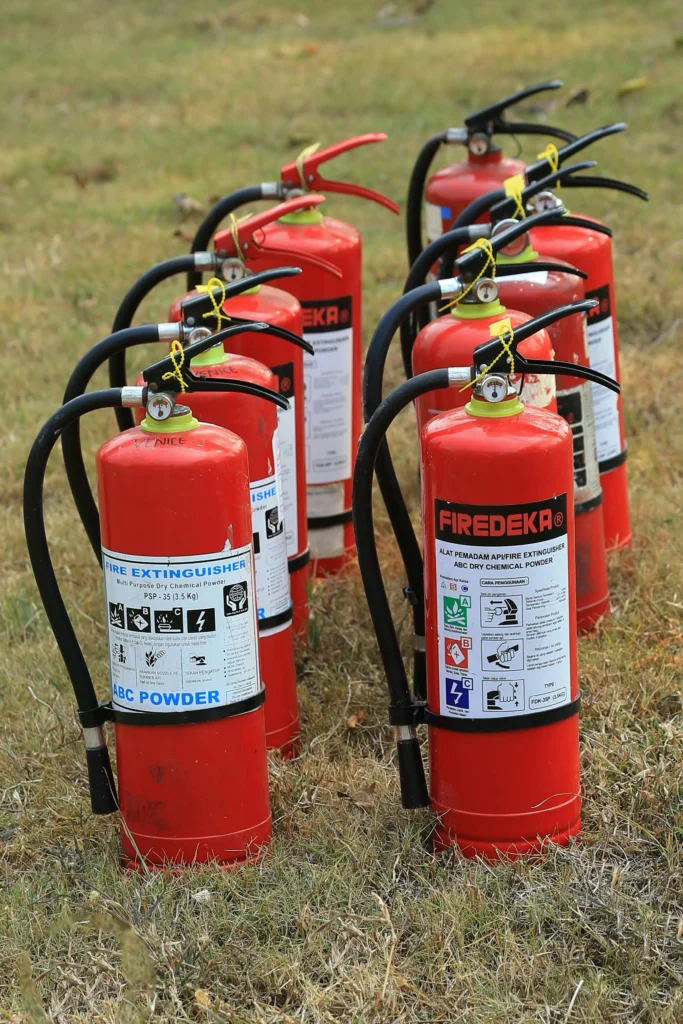
NFPA Fire Extinguisher Inspections
Regular fire extinguisher inspections are a good way of maintaining the quality of extinguishers, which, like any other material, need the proper care so that they work properly in small fire situations.
NFPA 10 provides a proper standard for portable fire extinguishers and how they are to be maintained. This standard is a trusted guideline for inspections and states all of the ways in which maintenance must be done and how you should inspect extinguishers.
Monthly inspections are a principle that needs to be done, to keep extinguishers in proper health. So, here are a few points that you’d want to follow during your monthly inspection,
The extinguisher needs to be located at its designated spot.
The fire extinguisher needs to be visible or there should be proper signs indicating in which direction the fire extinguisher is present.
It needs to be in an easily accessible location.
The pressure gauge needs to be in an operable position from the fire extinguisher.
The fire extinguisher needs to be checked for full capacity by weighing it.
The condition of the tires, wheels, nozzle, and hose needs to be checked for wheeled extinguishers.
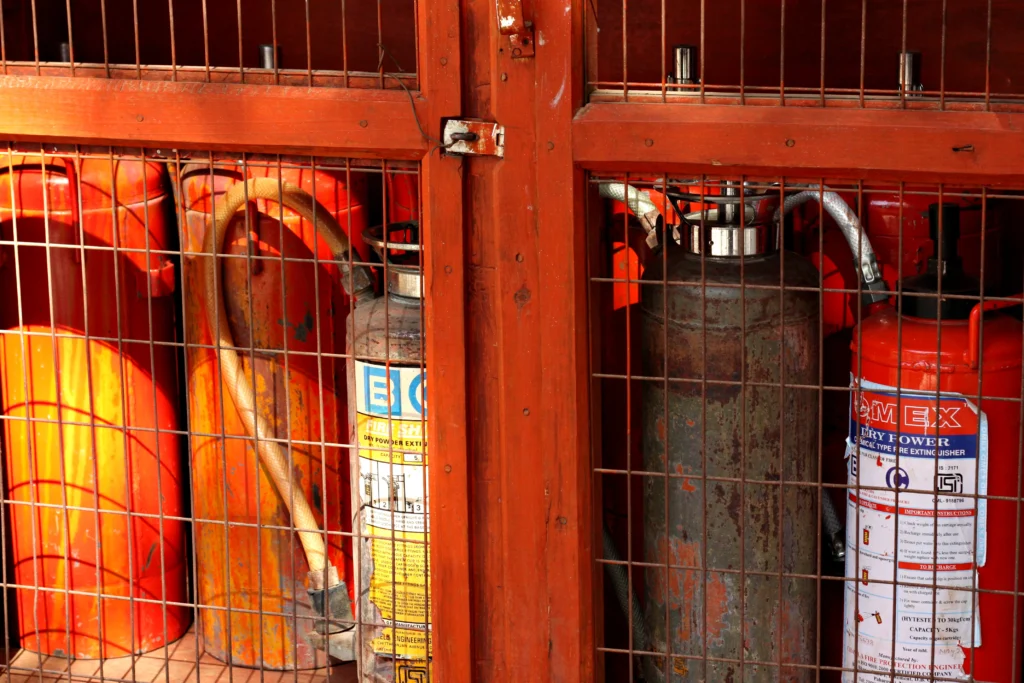
Fire Extinguisher Maintenance Procedures
Maintenance inspections are internal (only if needed), and external examinations of fire extinguishers are required annually. The information about the annual inspection is usually included in the manufacturer’s service manual with the extinguisher, but it is still advised to let a professional conduct the inspection.
Focusing on the basic elements of the fire extinguisher, here are the parts of an annual inspection,
Inspecting all the mechanical parts of the extinguisher, repairing and replacing if necessary.
Focusing on the physical condition of the fire extinguisher.
Check if the means of expelling through the extinguisher is working and intact.
The proper amount of expelling agent is still available in the fire extinguisher.
If needed, multiple extinguishers were checked at the same time to ensure that they were all within an operable range.
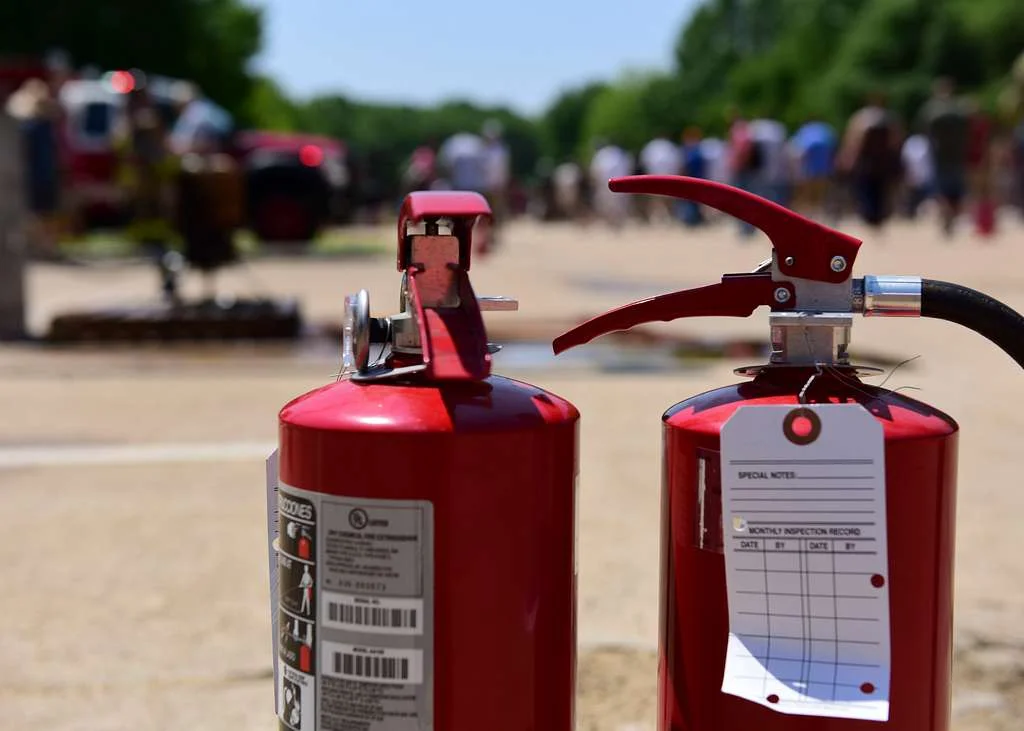
Hydrostatic Testing - Internal Examination
Internal examinations are a method of testing whether extinguishers still have enough juice to operate properly or if they need to be recycled and renewed. It is done with the help of hydrostatic tests. Here are a few shortened steps of the process,
The testing begins with an internal and external examination of the extinguisher.
Then, the parts of the extinguisher are stripped down until only the metal shell and the hose are left.
Then, the extinguisher tank is filled with a liquid material like water to the top and then held at a certain hydraulic pressure level for some time.
After the pressure-checking procedure, the extinguisher tank is re-assembled and then the new expelling agent for the tank is filled into it.
The whole process of hydrostatic testing on portable extinguishers can be a bit on the dangerous side, and hence, only a certified fire safety individual should conduct a hydrostatic test on an extinguisher, and it is ill-advised for any other individual to try so.
Stored Pressure Fire Extinguishers - How ZenFire can Help!
A proper inspection of fire extinguishers is something that can lead to saving a lot of lives and ultimately improve the security of any place. But these inspections are hard enough to do physically and repetitively without the inclusion so many external factors like the environment and different types of extinguishers.
We at ZenFire understand these problems and want to help make these processes easier and safer for you. We’re ready to greatly decrease the time spent on your inspections while also making them much easier on the pocket.
Learn more about how we can help you make inspections so much easier by booking a free demo here!
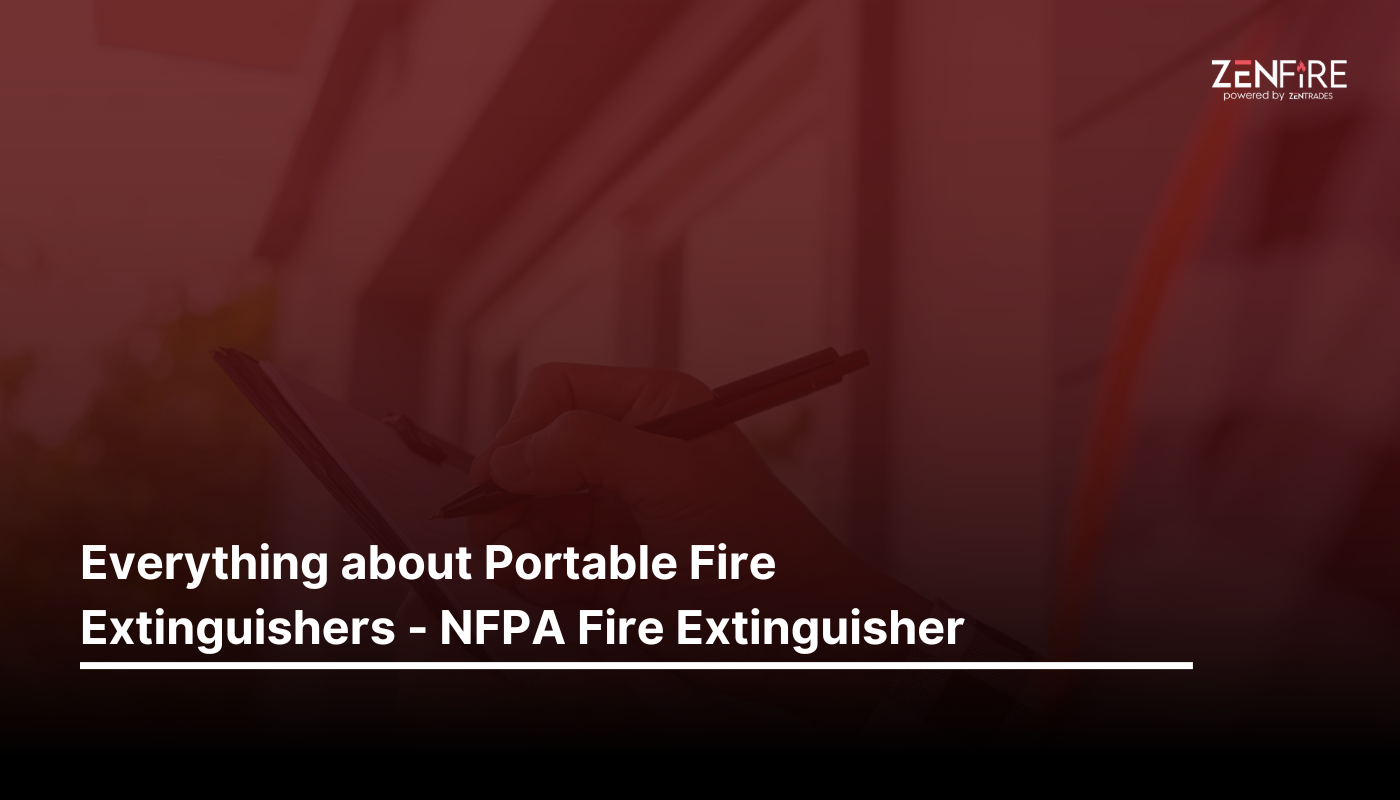
Explore a better way to grow your business. Book a free demo now!
Get organized, win jobs, and wow customers.
Book A Free Demo with ZenTrades Today!
Related Reading
Why Your Field Software Management Software Needs QuickBooks Integration
ZenTrades Why Your Field Service Management Software Needs QuickBooks Integration Read More Request Demo...
Read MoreZenTrades How To Manage Electrical Service Agreements Like...
Read MoreZenTrades The Best 5 Jobber Alternatives In 2023...
Read More

